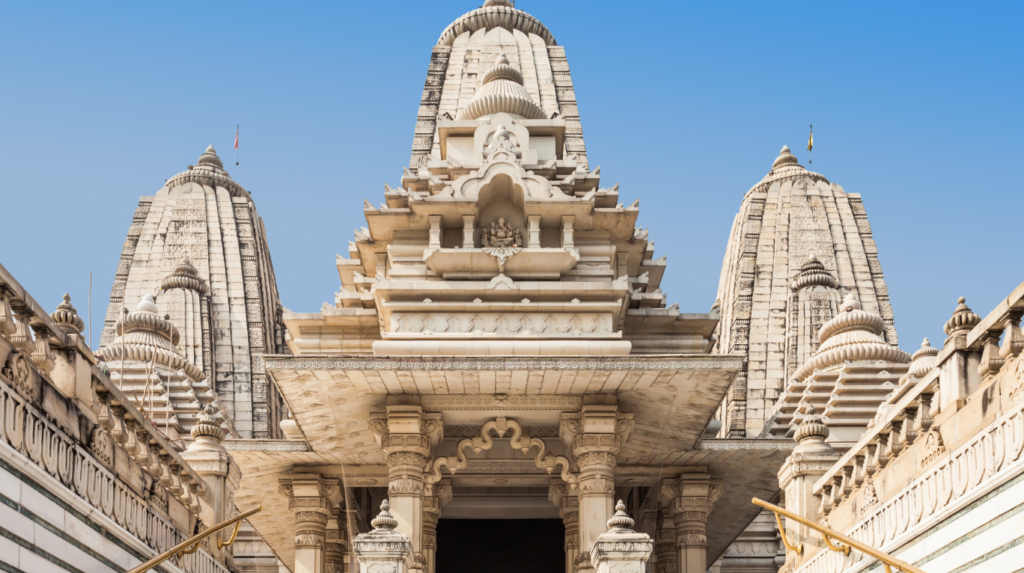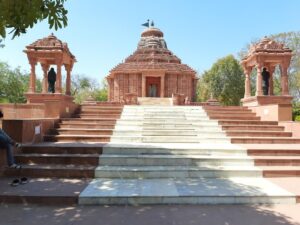A city with a wealth of musicality and rich history, Gwalior holds an important position in the middle of awe-inspiring India. It is lined with hilly and plain terrains that change into an enshrouded green carpet as the monsoon comes closer. The temple is located in the middle of an enclosure that lies on the southern edge of the Agnikund, which is where there are numerous smaller shrines dedicated to Shiva’s mount Nandi Particularly of significance and interest is a statue of four tonnes of Nandi constructed of panchadhatu which is the alloy used to make idols, that is made of five different metals: silver, gold as well as brass, copper and zinc.
Meaning of the Temple ( Mandir ):
“Achaleshwar” is an expression from an appreciation of Sanskritic Sandhi and is derived in the Sanskrit terms ‘Achal’ which means permanent and ‘Ishwar’ which refers towards God in the sense of God and God. The Mahadeva word, also created by the laws of Sandhi, is the name of the god of great (maha) god (deva) and an epithet for Shiva, who is the god to which this temple was dedicated.

The pearl in the fortresses of India:
Gwalior is most well-known for its fort on a hill that was described as ‘The pearl among forts across India’. Gwalior is the legacy of the dynasties that have ruled for decades. Their influence is evident in the numerous regal buildings dominating the landscape. In a sense, Gwalior is still retaining a majestic medieval style.
Gwalior is a place that has extraordinary appeal and popularity in Hindustani Classical Sangeet and retains Indian traditions and the richness of music through the decades. Gwalior, the Gwalior Gharana, is considered one of the most ancient and well-known Khayal Gharanas. Legendary musicians such as Tansen and Baiju Bawara belonged to Gwalior and performed for the court royal of Gwalior.
Built & Structure:
According to local legends, the temple was built around the footprint of Shiva. Shiva is revered, as in many Shiva temples. The form of the Shiva is the linga or nuclear reactor dome-like structure that symbolizes Shiva in the form of the god of Creation set upon a stone that is an abstract representation of Shakti. The Shiva, the linga in the temple, is a naturally formed stone structure that is naturally.
Repair & Renovation:
This temple became the subject of badly-constructed repair and renovation work. An extensive layer of limestone was sprayed over the intricate and exquisite marble and filigree work of the temple’s interiors, for the artisans of Rajasthan, were famous. This caused the temple’s beauty to become obscured, making it an unimportant structure. But this was an advantage in disguise, as it protected the exquisite marble from deterioration over the decades.
In 1979 Prince Charles of the Sirohi princely state found a piece of marble that the lime had exposed. This began the work to renovate the temple under the direction of the prince’s crown. The skilled artisans started the restoration of the temple to its former splendour by carefully removing the lime to reveal the marble beauty. Columns and pillars were meticulously removed, then rebuilt and then reinstalled correctly.
Music & Melody:

The harmonies that are classical Indian music are best experienced at Tansen Samaroh, a concert in honour of an iconic musician and great master in classical music, Tansen. The soul-stirring performance brings the night to life. The goal is to highlight the real essence of music and revel in the melodies that accompany every festival performance. Each year, the festival is scheduled from the 26thto the 30th of December in various venues in Gwalior.




